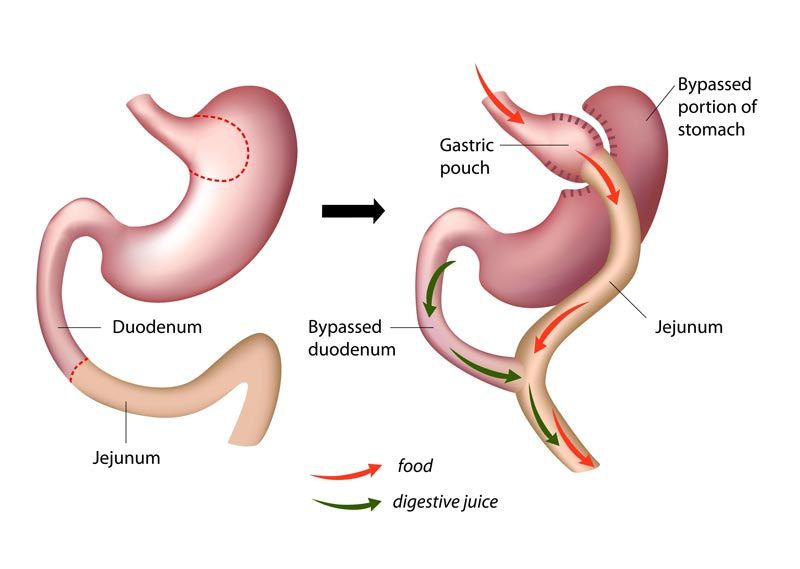Gastric Bypass
This is also referred to as Roux-en-Y gastric bypass (RYGB).
It was first described as a bariatric surgical procedure in the 1990s. Since then, it has been improved and refined in order to obtain optimal results. It is a combination of both a restrictive and malabsorptive procedure. The restrictive component involves creating a new stomach or pouch that is 30-60mL in volume capacity. The malabsorptive component is the bypass mechanism where part of the digestive tract is bypassed. Not only does this cause an element of malabsorption (and therefore reduced calorie absorption) but it also alters hormones. The result is reduced appetite and increased satiety.
Following a roux-en-y gastric bypass, you will need to have lifelong monitoring of vitamins and nutrients. You will be required to take supplements e.g. multivitamins, iron and calcium. In patients who are not suitable for a sleeve gastrectomy, a roux-en-Y gastric bypass may be the best solution. It carries a slightly higher surgical complication risk than a gastric sleeve due to being a more complex surgery.



